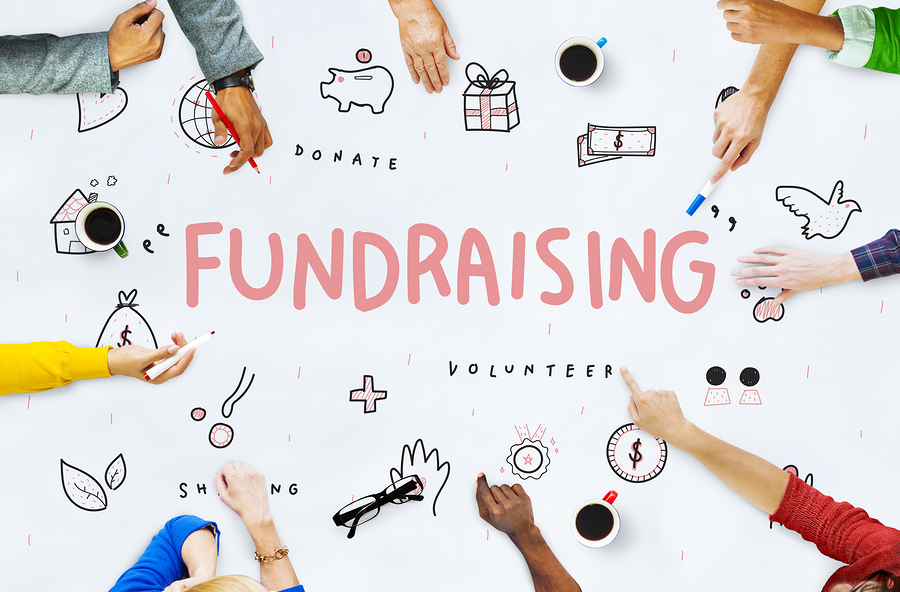Nonprofit Agency: Expert Providers to Support Your Mission and Goals
The Role of Area Involvement in Nonprofit Fundraising: Building Lasting Relationships for Sustainable Assistance
Community engagement is increasingly identified as a critical part of successful not-for-profit fundraising. By fostering authentic relationships with local stakeholders, companies can grow depend on and loyalty, which are important for lasting assistance. However, the techniques and methods used to involve communities vary extensively, increasing vital questions regarding performance and effect. What are the ideal methods for cultivating these crucial links, and how can nonprofits measure their success in this sector? Comprehending these characteristics could dramatically affect the future of fundraising initiatives and the overall objective of nonprofit companies.
Understanding Neighborhood Interaction
Neighborhood interaction is a vital component of successful nonprofit fundraising efforts. It refers to the methods and tasks that companies utilize to get in touch with their local communities, fostering partnerships that are equally useful. Recognizing community involvement involves recognizing its multifaceted nature, which includes involvement, outreach, and collaboration. Nonprofits have to recognize crucial stakeholders-- such as neighborhood members, regional services, and other organizations-- to develop effective involvement approaches.
Effective community engagement is based on active listening and responsiveness to the demands and rate of interests of the area. This procedure involves getting responses, recognizing neighborhood characteristics, and making sure that the organization's mission aligns with regional top priorities. Engaging the community can take different forms, consisting of public meetings, volunteer possibilities, and collaboration efforts, each designed to encourage participation and investment in the company's goals.
Furthermore, neighborhood engagement ought to be come close to as a continuous dialogue as opposed to an one-time initiative. By promoting an inclusive atmosphere where neighborhood voices are heard and valued, nonprofits can build a solid foundation for future fundraising undertakings. Ultimately, a deep understanding of area involvement empowers companies to produce authentic connections that enhance their overall performance and sustainability.
Advantages of Strong Relationships
Solid partnerships developed via area involvement return various benefits for not-for-profit fundraising initiatives. Most importantly, these connections foster trust and credibility, important components in motivating donors to add. When prospective supporters see a not-for-profit proactively involved in their community, they are most likely to think in its mission and influence.

Furthermore, these partnerships facilitate efficient communication. Nonprofits can utilize their connections to share tales of impact, updates, and requires, making sure that supporters continue to be informed and engaged. This open line of communication not just reinforces bonds however likewise motivates word-of-mouth promotion, increasing the nonprofit's reach.
Finally, strong area ties can draw in brand-new partners and enrollers. Companies and people are more inclined to straighten with organizations that demonstrate significant community involvement, giving additional resources and support that can dramatically improve fundraising capacities. Hence, cultivating robust relationships through area engagement is important to a not-for-profit's long-term fundraising success.
Strategies for Efficient Interaction
How can nonprofits effectively involve their neighborhoods to improve fundraising initiatives? Routine updates, engaging web content, and calls-to-action can galvanize area passion and engagement.
2nd, holding community occasions, such as workshops, volunteer opportunities, or fundraising drives, helps with face-to-face communication, allowing nonprofits to display their influence and initiatives. These events not only elevate funds however likewise cultivate partnerships and enable community participants to involve directly with the reason.
Third, executing customized communication strategies can boost engagement. Customizing messages to certain benefactor sectors based on passions and past payments cultivates a sense of belonging and investment in the organization's goal.
Lastly, creating collaborations with local services and neighborhood leaders can enhance outreach initiatives. Collective efforts can improve visibility and reputation, demonstrating a cumulative commitment to the neighborhood's wellness. By integrating these methods, nonprofits can construct enduring connections that boost fundraising efforts and drive lasting support.
Gauging Engagement Success
While involving the area is critical for successful not-for-profit fundraising, measuring the efficiency of these engagement initiatives is just as important. Establishing clear metrics enables organizations to evaluate just how well they are attaching with their audience recommended you read and achieving their fundraising goals. Trick performance indications (KPIs) such as benefactor retention prices, volunteer involvement degrees, and engagement on social networks platforms go to website offer tangible information for examination.

Consistently assessing these metrics makes it possible for organizations to pivot their strategies when needed, guaranteeing that community engagement remains lined up with their total mission. In addition, sharing these outcomes with stakeholders promotes transparency and develops trust, urging further neighborhood participation. Eventually, a durable dimension framework not just notifies future fundraising efforts but likewise strengthens the partnership between the not-for-profit and its advocates, laying the groundwork for lasting success.
Case Studies in Area Influence
Many study highlight the extensive impact that area engagement can carry nonprofit fundraising success. One significant example is the "Food for Thought" campaign, where a local food bank partnered with colleges and organizations to host community suppers. These events not just elevated funds but likewise cultivated a feeling of belonging among participants, substantially enhancing contributor retention prices.
An additional compelling instance is the "Green Spaces Task," which included local homeowners in the revitalization of city parks. This effort not only gathered financial backing from regional organizations yet also cultivated a volunteer base that contributed to continuous maintenance and programs. The feeling of possession and satisfaction amongst area participants translated into continual payments.
In the world of arts, the "Art for All" project successfully engaged local musicians and clients to develop joint art installations, leading to increased presence and contributions for a neighborhood arts not-for-profit.
These examples highlight that when nonprofits prioritize image source community participation, they can produce enduring connections that enhance fundraising efforts, ensuring sustainable support and fostering a vivid area culture. Such instances show that area interaction is not merely a strategy yet a necessary pillar of nonprofit success.
Verdict
In verdict, community interaction is indispensable to the success of nonprofit fundraising initiatives. Ultimately, a robust structure of area support not only amplifies fundraising possible but also grows a society of cooperation, necessary for achieving long-term organizational objectives and sustaining purposeful impact. fundraising consultant.
Nonprofits need to recognize key stakeholders-- such as community members, regional organizations, and various other organizations-- to create effective interaction methods.

In final thought, community involvement is integral to the success of not-for-profit fundraising efforts.